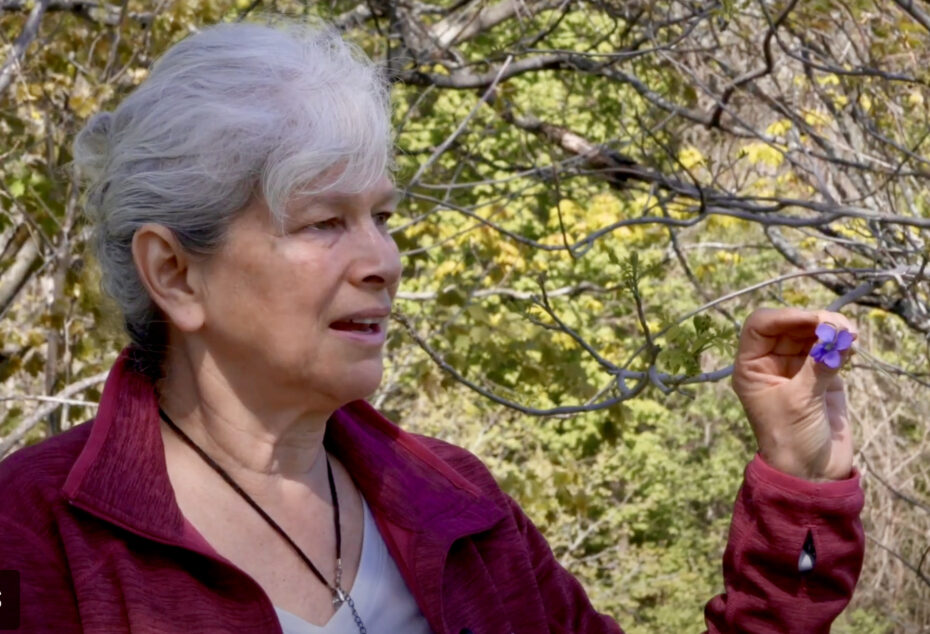
When you head out on a weekend nature walk through a park or a forest, chances are you might not be aware that the plant life you’re surrounded by is much more than just lovely, fragrant plants and majestic trees.
Many of those common plants have medicinal properties – properties Indigenous peoples have known about for centuries.
As part of McGill’s Indigenous Awareness Weeks (IAW), two residents of Kahnawa:ke, Knowledge Keeper Elaine Delaronde and Brooke Rice, produced a half-hour video called the Medicinal Plant Walk, through the Morgan Arboretum, to stop and smell the flowers – and talk about the many ways those flowers and plants can be used to promote wellness and healing.
Lilacs’ versatility
For instance, the lilacs that bloom every spring are more than just pleasant-smelling purple plants. “You can make jellies, you can make essential oils, and it’s really good for the skin,” Delaronde says.
Rice adds lilac plants can also be used to make syrups. “Harvest a little bit of the flowers, and you can do a simple syrup,” Rice says. “Add sugar or maple or water, and it’s really delicious. Add lemon juice…lilac lemonade.”
The white pine, also known as the Tree of Peace by the Haudenosaunee (Five Nations) Confederacy, is known for having immunity-boosting properties.
“You take the needles, and you can make a tea, and it’s high in Vitamin C. It’s an immune enhancer,” Delaronde says. “I know that our people, when the Europeans came, they might have run out of food so they were malnourished, so [we] made them the teas with this.”
Daily show of gratitude
Delaronde points out when people respect nature, nature gives back.
“Every morning, it would be nice for everyone to greet the sun, give your gratitude to the sun, to the natural world, that we acknowledge it, so it can take care of us and sustain us,” she says. “We’re all part of it. We treat the earth like our mother. It grows everything. We have everything we need.”
The Medicinal Plant Walk is in keeping with the stated mission of IAW to give the McGill community an opportunity to celebrate, share and deepen our understanding of Indigenous culture and realities, and to elevate traditional Indigenous knowledge.
On September 20, Abenaki plant specialist Michel Durand Nolett will give a virtual presentation on medicinal plants at McGill’s Gault nature reserve in Mont-St-HIlaire. This presentation will be in French, and the video will be available on IAW website on September 20.
Check in on the IAW website as new videos are added daily.
